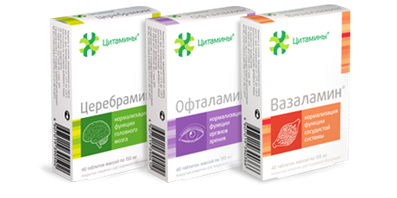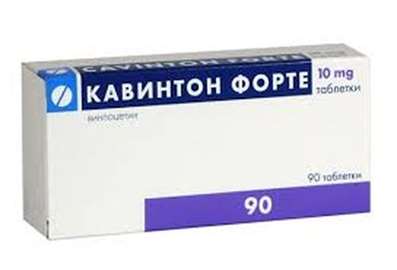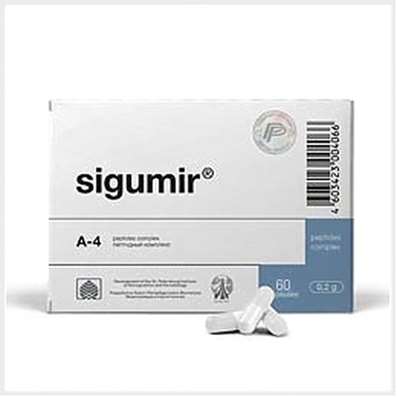Cholinergic synapse
30 Nov 2016
Acetylcholinum, acetylcholine (s) — a mediator in postganglionic synapses — collects in high concentration in vesicles of axoplasm of the nervous termination. AH it is formed of choline and the activated acetic acid (an atsetilkoferment And) under the influence of atsetilkholintransferasa enzyme. The high-polar choline is activly taken axoplasm. On a membrane of a cholinergic axon and the nervous terminations there is a special transport system. The mechanism of release of a mediator is up to the end not opened. Vesicles are fixed in a cytoskeleton by means of protein of sinapsin in such a way that their concentration about a presynaptic membrane high, however contact to a membrane is absent. At emergence of exaltation concentration of Sa2 + in axoplasm increases, protein kinases are activated, and there is phosphorylation of sinapsin leading to a detachment of vesicles and their linkng with presynaptic membrane. Then contents of vesicles are thrown out a synoptic cleft. Acetylcholine instantly passes through a synoptic cleft (molecule AH has length about 0,5 nanometers, and width of a cleft makes 30-40 nanometers). On a postsynaptic membrane, i.e. a membrane of a target organ, AH interacts with receptors. These receptors are excited also by an alkaloid muskarin and therefore are called muskarin atsetilkholin receptors (M-holinoretseptory). A nicotine imitates action of Acetylcholinum on receptors of ganglionic synapses and a trailer plate. A nicotine excites holinoretseptor of ganglionic synapses and a trailer plate of a motor-neurone therefore this type of receptors is called nicotinic atsetilkholiny receptors (N-holinoretseptory).
In a synoptic slot acetylcholine is quickly inactivated specific atsetilkholinesterasy, being in a slot, and also less specific serumal cholinesterase (butyrylcholinesterase) which is in serum of blood and interstitially liquid. Pay attention to Kartalaks.
On the structure, a method of signal transmission and affinity to different ligands M-holinoretseptory are subdivided into several types. Let's consider M1, Sq.m - and M3 receptors. M1-Retseptory are on nervous cells, for example the gangliyakh, and their activation promotes transition of excitation from the first to the second neuron. M2-Retseptory are located in heart: opening of potassium channels leads to deceleration of diastolic depolarization and reduction of heart rate. M3-Retseptory play a role in maintenance of a tone of smooth muscles, for example, of intestines and bronchial tubes. Excitation of these receptors leads to activation of phospholipase With, to depolarization of a diaphragm and increase in a tone of muscles. M3-Retseptory are located also in cells of glands which are activated by means of S. V phospholipase a brain there are different M-holinoretseptorov types playing a role in many functions: transmission of excitation, memory, learnability, painful sensitivity, monitoring of activity of a trunk of a brain. Activation of M3 receptors in endoteliya of tanks can lead to release of N0 nitrogen oxide and thus expand tanks.
Acetylcholine
Acetylcholine (Latin Acetylcholinum) is a mediator of a nervous system, the biogenic amine relating to the substances which are formed in an organism.
Acetylcholine possesses an important role as to a mediator of the central nervous system. He participates in momentum transfer in different departments of a brain, at the same time small concentration facilitate, and larger — slow down synoptic transfer. Changes in exchange of Acetylcholine can lead to disturbance of functions of a brain.
Acetylcholine is an intermediary of transfer of nervous impulse to a muscle. At a disadvantage of Acetylcholine force of reductions of muscles decreases.
The terminations of nervous fibers for which it serves as a mediator are called cholinergic, and call the receptors interacting with it holinoretseptor. Holinoretseptora of postganglionic cholinergic nerves (heart, unstriated muscles, glands) designate as the m-holinoretseptory and located in the field of ganglionic synapses and in somatic synapses — as N-holinoretseptory. Such division is bound to features of the reactions arising at interaction of Acetylcholinum with these biochemical systems: muscarinic in the first case and nicotinosimilar — in the second; m - and N-holinoretseptory are also in different departments of a CNS.
Storage and release of Acetylcholine
At microelectrode registration of electric potentials of a postsynaptic membrane of a neuromuscular synapse Fett and Katts (Fatt and Katz, 1952) taped spontaneous small (0,1 — 3 mV) the depolarizing potentials arising in a random way about 1 time a second. Authors called these potentials small-type potentials of a trailer plate. Their amplitude was significantly lower threshold for development of action potential. They were enlarged under the influence of an inhibitor of AHE of neostigmin and blocked by a tubocurarine (a competitive blocker of N-holinoretseptorov); therefore, they were caused by allocation of Acetylcholine. In this regard it was suggested that Acetylcholine is allocated from the presynaptic terminations in the fractional constant portions — quanta. Also morphological substrate of quanta — synoptic blisters was soon found (De Robertis and Bennett, 1955). When action potential comes to the termination of an axon of a motor-neurone, 100 and more quanta (blisters) of Acetylcholine are allocated (Katz and Miledi, 1965). The patterns of storage and allocation of Acetylcholine studied on a neuromuscular synapse are applicable also to other cholinergic synapses with fast transfer.
It is supposed that each blister contains from 1000 to 50 000 molecules of Acetylcholine, and the presynaptic termination of a motor-neurone contains 300 000 and more blisters. Besides, it isn't excluded that rather essential quantity of Acetylcholine is diffusively dissolved in an axoplasm. Record of currents of single channels of a postsynaptic membrane of a neuromuscular synapse at constant application of Acetylcholine showed that one molecule of this mediator causes potential about 3 x 10" 7 Century. It follows from this that even minimum (by calculations) quantity of Acetylcholine in one blister — 1000 molecules — are enough to cause the small-type potential of a trailer plate (Katz and Miledi, 1972).
Exocytose of Acetylcholine and other mediators from the presynaptic terminations is suppressed with botulotoxin and tetanin — poisons of Clostridium botulinum and Clostridium tetani respectively. These anaerobic organisms develop one of the strongest of the known toxins (Shapiro et and!., 1998). The Clostridium toxins consisting of the serious and mild chains bound by a disulfide ponticulus connect to the unknown a receptor on the cholinergic termination so far and then by means of endocytosis are transferred to a cytosol. The mild chain represents endopeptidase which after activation hydrolyzes components of a core of the SNARE complex participating in an exocytosis. Various types of botulotoxin blast different proteins of a presynaptic membrane (sintaksin-1 and SNAP-25) and synoptic blisters (sinaptobrevin). Botulotoxin A as medicine is considered in hl. 9 and 66.
Tetanic toxin is a poison of the central action: he is retrogradno had on axons of motor-neurons to bodies of these neurons in a spinal cord, further passes into the brake neurons connected with motor-neurons and blocks akzocitose a mediator from the last. It also leads to spasms, characteristic of tetanus. Poison of a spider the black widow — and-latrotoksin — contacts transmembrane proteins of the presynaptic terminations of neyreksinama, causing massive ekzotsitoz synoptic bubbles (Schiavo et al., 2000).

 Cart
Cart





